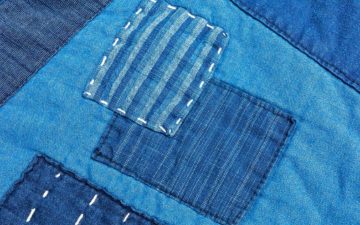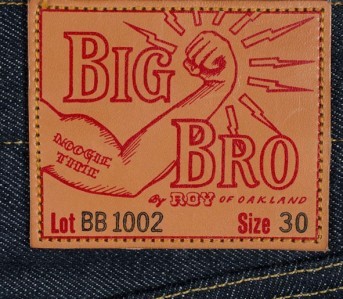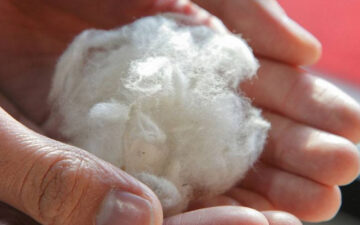Anyone familiar with jeans knows that the main ingredient in the garment has been, and always will be, cotton. The fabric of our lives has been used since denim’s proverbial Big Bang and there’s no sight for that to chance any time soon. However, this hasn’t stopped manufacturers from seeing what blending in other materials can provide in a final product.
Here’s a list of denim compositions consumers will happen upon, along with some curveballs that get thrown along way. Naked & Famous has been the most adventurous denim company for a while now; they’ve used almost every composition below!
100% Cotton
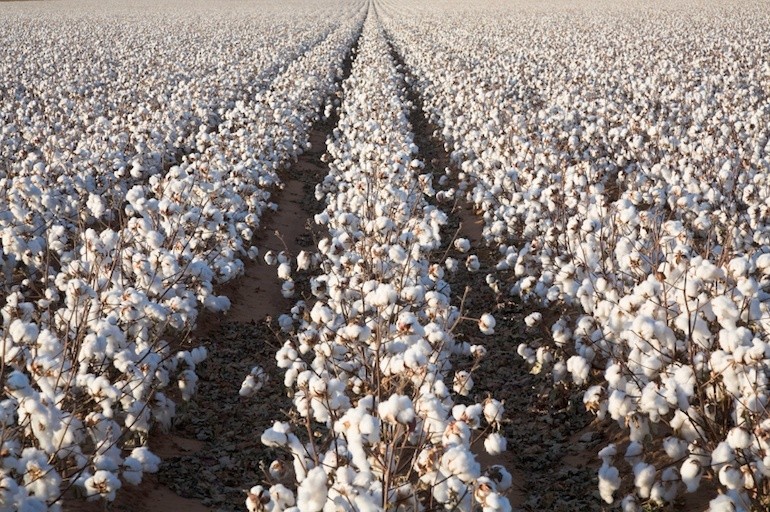
The original denim composition is still the most commonly found, and for good reason. Cotton breathes well, feels good on the skin and soaks up indigo better than anything. It is also widely available and simple to mill with today’s modern technology. With that being said, 100% cotton jeans have only limited stretch, potentially restricting movement depending on the cut of the pant. Once stretched out, they won’t return to form until meeting water. Cotton’s durability is high, but will weaken over time.
Not all cotton is made equal. There’s a wide variety of different cotton plants out there, be it Pima, Egyptian, Texas or Zimbabwean. Depending on what cotton, or blend of cotton, is used, it can change the level of durability, comfort and how the jeans fade. If you’re interested in learning more, Heddels’s got you covered.
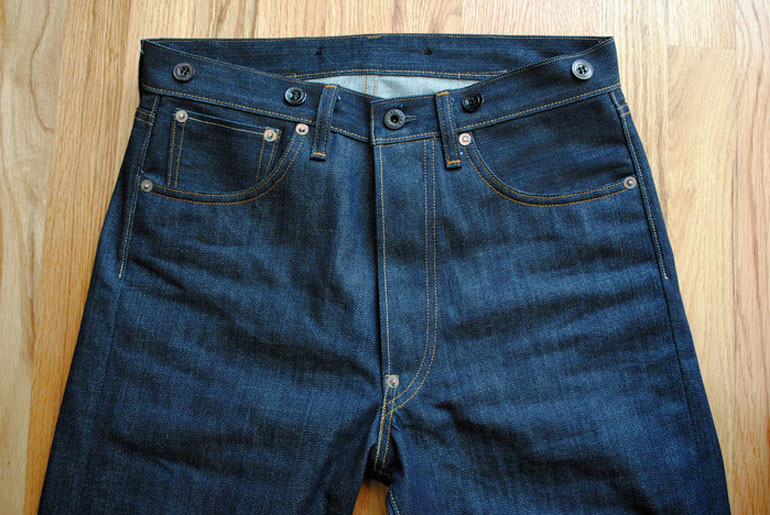
100% cotton denim from Circle A Brand
Elastane/Polyurethane
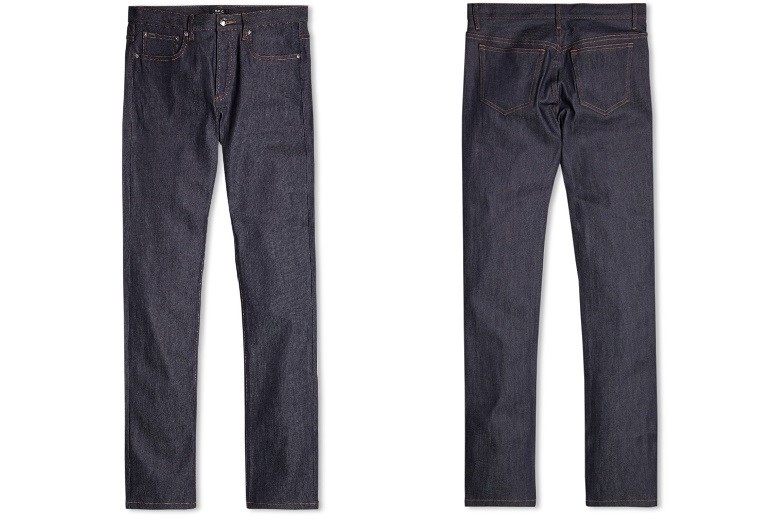
APC Petit Standard Stretch
Elastane, also known as spandex or Lycra, has become much more popular in past years as fashion pushed towards slimmer jean silhouettes. Whatever you call it, elastane is a hybridization of polyester and polyurethane that originally became popular for clothing in the 1960s. Due to its higher elasticity than cotton, spandex returns more closely to its original state after being stretched.
This allows for greater comfort and movement for those seeking a skinny aesthetic but also aids in durability, reducing the amount of stress caused by high levels of physical activity. With these two benefits in mind, it’s not surprising that elastane is commonly found in form hugging women styles and denim made for cyclists.
Depending on the jean, you can expect anywhere from 2%-10% of elastane integrated into the cotton weave. While it can be found in jeans of every level of quality, stretch denim has its detractors in the raw denim culture, particularly amongst purists. Fades can often become blurry and less defined due to the reduction of hard creasing.
Polyester
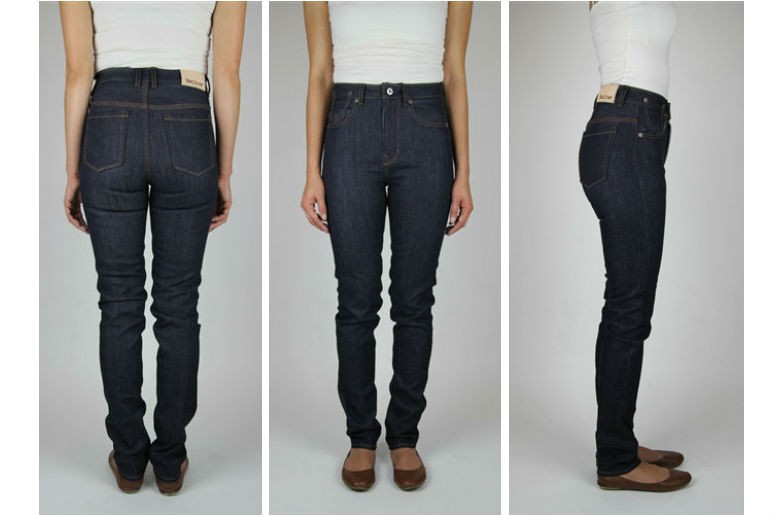
Railcar Fine Goods Donna X008 uses 93% cotton, 6% polyester and 1% spandex
Polyester has found its way into a variety of clothing over the years, be it tops or bottoms. As a synthetic fiber made from petroleum, its use has proven quite a viable resource, peaking in popularity in the 1970s in flammable suits.
In addition to being cheap to make, it has numerous qualities that can be desirable for clothing: it’s hydrophobic, extremely strong and durable, retains its shape well, is wrinkle resistant and easy to clean. When blended into a pair of denim, it’s usually to reinforce the elastane for added durability. Therefore you’re only likely to see it in denim with stretch.
Kevlar
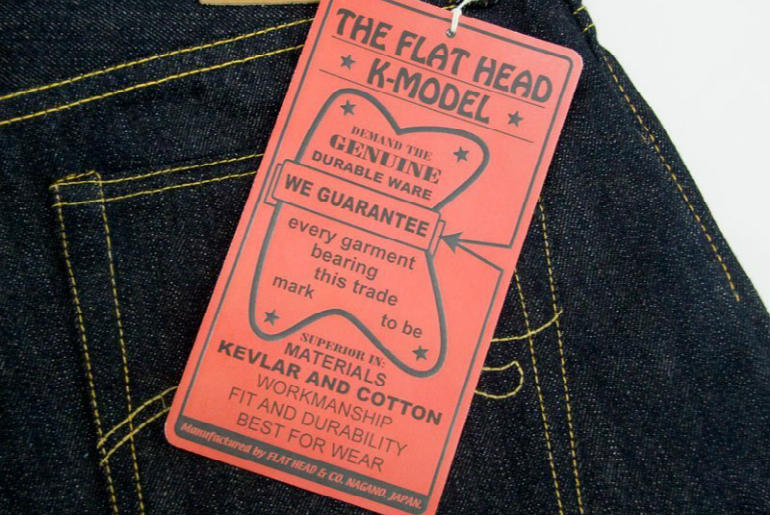
Flat Head Kevlar Denim
Anyone looking to survive a gunshot has probably heard of Kevlar by now. It’s five times stronger than standard steel, easily making it the strongest fiber utilized in denim today. Originally developed in the 1960s and commercially marketed in the 1970s, Kevlar’s applications include underwater use, bulletproof vests, climbing ropes, racing sails, and body armor.
In denim, Kevlar is usually incorporated with the motorcyclist in mind. Riders can stay safe without looking like Robocop. The Flat Head and Naked & Famous are two brands that have used the fiber. Some companies, such as Maple Motorcycle Jeans, will take things a step further and use Kevlar as a lining.
Sugar Cane

Cane fibers are not often used in textiles, but in the world of denim, it’s impossible to overlook what Toyo Industries brand Sugar Cane & Co. has been doing for years. At a 50/50 ratio of sugar cane used vs. cotton, it’s one the most balanced ratio found on this list.
The benefits here are two-fold: it’s better for the environment due to a reduced amount of cotton used and it makes for some unique fades. Just don’t expect the sweetness of sugar to cover up the stink of unwashed raws!
Hemp
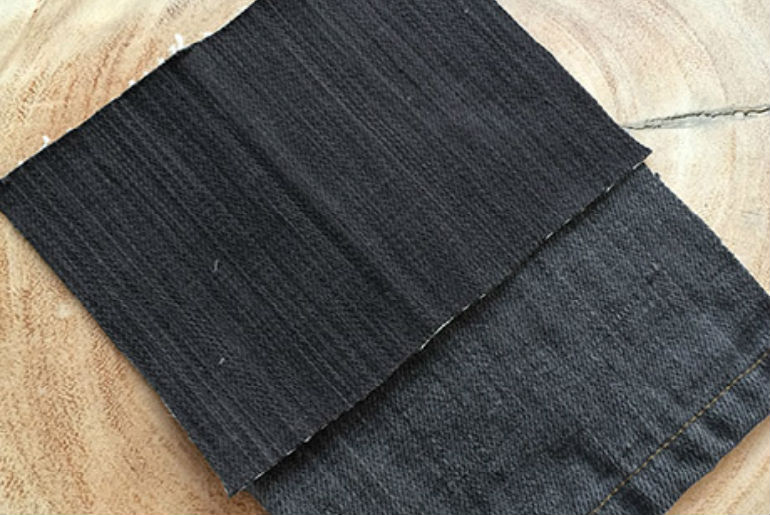
Cloth sample from Gustin Charcoal Organic Hemp 60% cotton 40% Hemp
Proving yet again that cannabis is more than just for fun, hemp has made its way into high quality denim. Hemp-blend denim often has a brown hue on the weft and it can add beautiful character to jeans in a similar fashion to people’s favorite slubbier denims.
The biggest benefit–as with the use of sugar cane–is the reduced footprint hemp has on the environment. Cotton may be easy to process for clothing, but it takes twice as much land and water than hemp. Since growing the plant is the most energy intensive facet of the entire textile production process, this leads to excellent efficiency. This is great for the economy as well, since farmers with poor irrigation can grow it prolifically. Just don’t try to smoke your jeans!
Silk
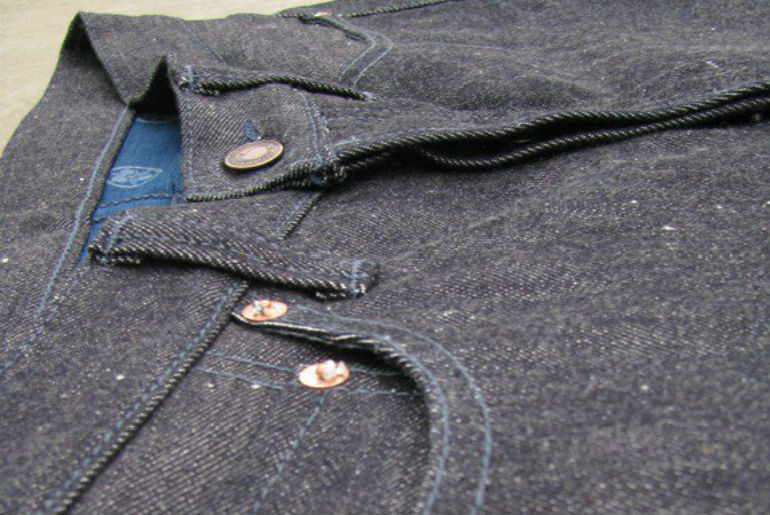
Momotaro x Blue Owl Collaboration, 60% Cotton 40% Silk
Few materials bring to mind luxury like that of silk. Highly valued for thousands of years in Asia, it was once punishable by death to illegally trade and smuggle silk worms. Luckily this is no longer the case, but it’s still an expensive resource.
Silkworms excrete the protein fiber to form a cocoon before transitioning into their adult stage. Many insects actually create silk at the end of their larval stage but only a few moth species, such as the mulberry silkworm, are useable in textiles.
Silk has a plethora of different characteristics that lend itself to denim and clothing in general. It’s the strongest natural fiber in the world, insulates well, is very comfortable, lightweight and has an affinity for dye. It also has a natural sheen and color refraction that creates a distinct aesthetic. Due to it’s high production costs, scarcity, and high maintenance, silk will unlikely ever see widespread use in denim manufacturing.
Cashmere

Naked & Famous Cashmere Stretch Denim, 81% Cotton 16% Cashmere 3% Elastane
Anyone who has had the chance to sport a cashmere sweater can attest to the joy of having it caress your skin. Soft, warm, fuzzy and durable, cashmere is taken from specific species of goats that originated in the Kashmir region of India. With denim, its main function begin and end with its comfort characteristics.
Cashmere isn’t the best material for making a pair of jeans. For starters, cashmere typically needs to be dry cleaned. It also is prone to pilling with stronger anchor hairs than cotton. This means that the jean’s appearance can take a turn for the worse. Furthermore, it takes one goat four years to yield enough hair for one sweater. Therefore, like silk, it is unlikely to ever see mass production.
Stainless Steel
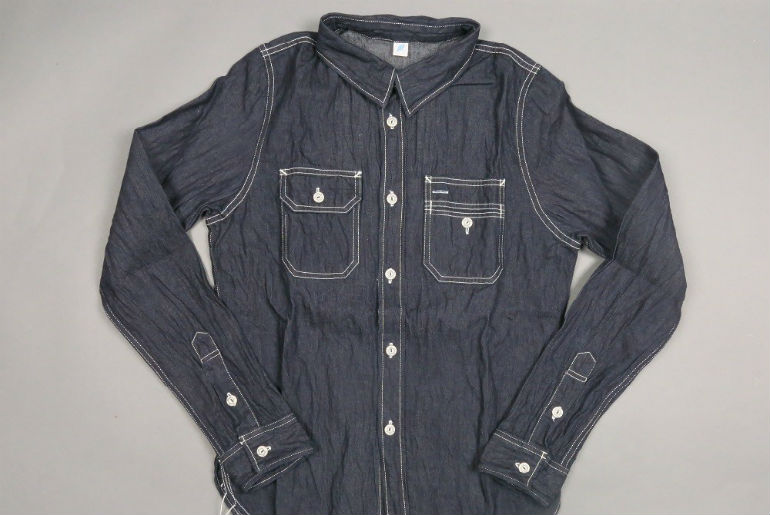
Pure Blue Japan’s Stainless Steel Work Shirt
The first image stainless steel pants brings to mind is likely a coat of chainmail around your legs. In reality, low gauge steel filaments are wrapped with cotton fiber before being woven into the rest of the fabric.
Obviously walking around with steel in your jeans sounds badass, lending a level of durability beyond that of standard cotton. But the lesser perceived benefit lies in steel’s lack of elasticity. At points of heavy creasing, steel will add emphasis to the fold. In other words, EPIC honeycombs. Naked & Famous busted out a stainless steel jean a few years back and now Pure Blue Japan has thrown a twist into the mix with their Stainless Steel Workshirt.
Polyamide
Occurring both naturally (found in wool) and synthetically (nylon), polyamides are stable protein fibers that provide a bevy of performance benefits: they have high tensile strength and elasticity, do not pill, and hold their color very well (a good or bad thing when considering fades).
Most interestingly, they are inflammable. Imagine flame-proof stuntman jeans! Realistically though, it tends to be found in a blend with elastane for increased flexibility and durability. Stone Island is one example of a company that uses polyamides in their denim compositions.
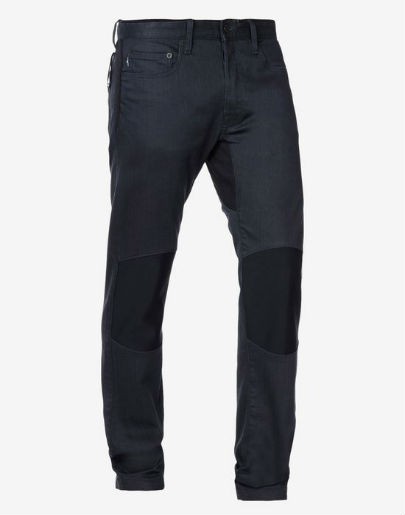
Stone Island cycling pant, Cotton with elastane and polyamide
Recycled Plastics
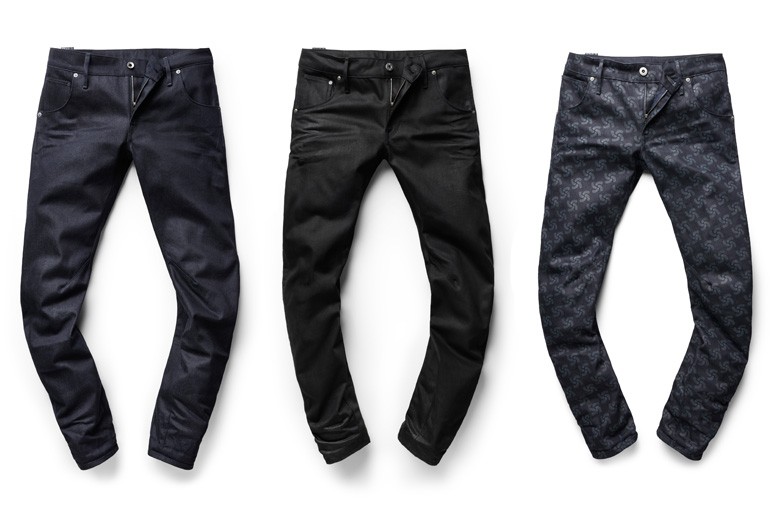
G-Star x Pharell Williams Raw for the Ocean denim
Plastic takes forever to break down and therefore is piling up as litter, in landfills and in the ocean. The repercussions of this buildup is toxins leaching into the soil and water as the plastic degrades, plus potentially choking or disabling wildlife. In other words, using plastic in denim is all about helping the environment.
Cone Mills, Levi’s and G-Star have all gotten involved in the cause and expect many more to jump on this eco-pursuit in the near future.
Despite the vast amount of experimenting that has occurred, each of these jeans is still predominantly cotton. But as the world continues to evolve, keep an eye out for even more blends composing your favorite denim!


